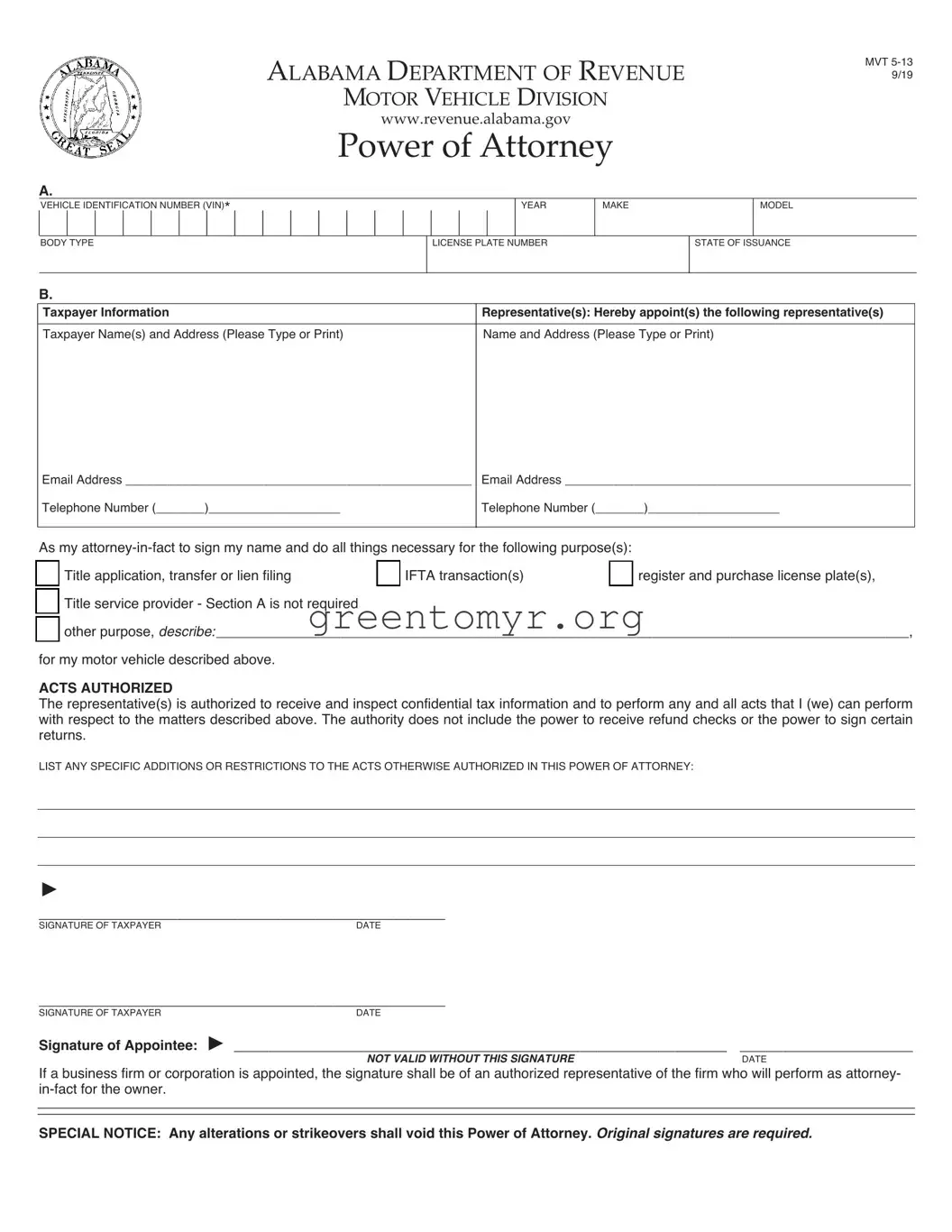ALABAMA DEPARTMENT OF REVENUE
MOTOR VEHICLE DIVISION
www.revenue.alabama.gov
Power of Attorney
A.
VEHICLE IDENTIFICATION NUMBER (VIN)* |
|
YEAR |
MAKE |
MODEL |
IBODYITYPE |
I |
ILICENSE PLATE NUMBER |
|
STATE OF ISSUANCE |
B. |
|
|
|
|
Taxpayer Information |
|
Representative(s): Hereby appoint(s) the following representative(s) |
Taxpayer Name(s) and Address (Please Type or Print) |
|
Name and Address (Please Type or Print) |
Email Address __________________________________________________ Email Address __________________________________________________
Telephone Number (_______)___________________ |
Telephone Number (_______)___________________ |
As my attorney-in-fact to sign my name and do all things necessary for the following purpose(s): |
6 Title application, transfer or lien filing |
6 IFTA transaction(s) |
6 register and purchase license plate(s), |
6Title service provider - Section A is not required
6other purpose, describe:_________________________________________________________________________________________, for my motor vehicle described above.
ACTS AUTHORIZED
The representative(s) is authorized to receive and inspect confidential tax information and to perform any and all acts that I (we) can perform with respect to the matters described above. The authority does not include the power to receive refund checks or the power to sign certain returns.
LIST ANY SPECIFIC ADDITIONS OR RESTRICTIONS TO THE ACTS OTHERWISE AUTHORIZED IN THIS POWER OF ATTORNEY:
V
_______________________________________________
SIGNATURE OF TAXPAYERDATE
_______________________________________________
SIGNATURE OF TAXPAYERDATE
Signature of Appointee: V _________________________________________________________ ____________________ |
NOT VALID WITHOUT THIS SIGNATURE |
DATE |
If a business firm or corporation is appointed, the signature shall be of an authorized representative of the firm who will perform as attorney- in-fact for the owner.
SPECIAL NOTICE: Any alterations or strikeovers shall void this Power of Attorney. Original signatures are required.

